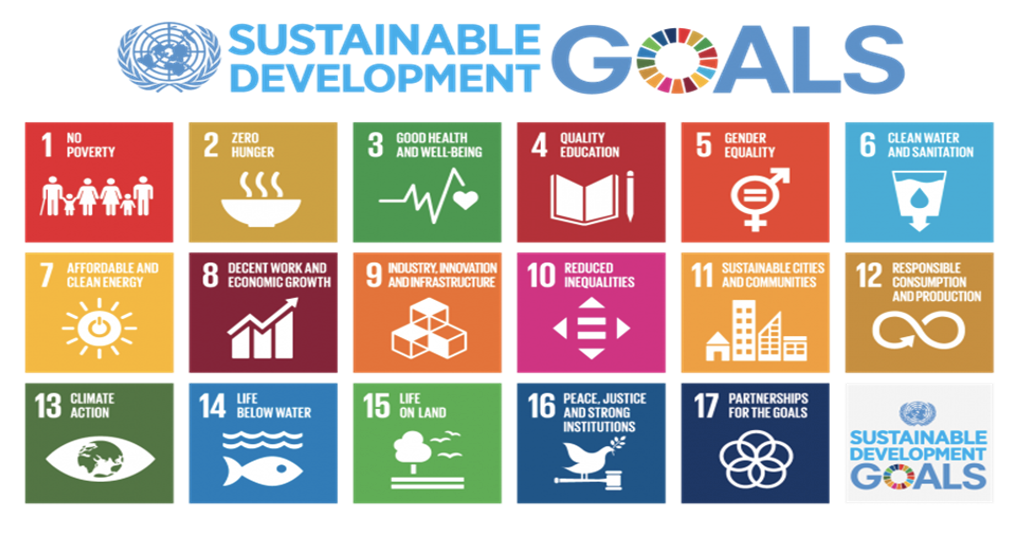WDM’s Circular Economy expert, Cynthia Milota challenges corporations to evaluate their circular economy and how to get started on their journey.
For the first installment of the Circular Economy practical guide, click here!
Consider your company’s pursuit of these alternative ways of doing business.
Getting Started
When developing a Circular Economy pitch to leadership, frame your argument on quantitative and qualitative benefits to the organization, rather than solely on environmental or social responsibility.
- Start with shared company values (Hayhoe, 2024),
- Connect the dots between CE principles and what matters most to the company,
- Outline how CE concepts can minimize risk and maintain the current levels of financial success,
- Minimize the rhetoric about ESG (Environmental, Social, Governance) goals or climate change.
The most significant trait distinguishing companies that make going green a value driver is they genuinely connect making a positive difference on a tangible climate issue to the organization’s purpose.
– Whitelaw, 2022
The World Economic Forum outlines the ways in which the Circular Economy transforms how business is done, (Jensen, 2023):
- More Attractive Products to drive brand and environment,
- Greater Customer Intimacy by maintaining relationships over the product lifecycle,
- Lower Costs by products being designed for longer life via reconditioning, disassembly, and remanufacturing, decreasing costs over a product’s lifetime,
- Recurrent Income Streams from products as a service and sharing economy models, along with waste by-products value streams,
- Greater Resilience by recovering product components and recycling materials to better withstand unstable supply chains.
Applying Circular Economy Principles to your Organization
Approaching and applying CE principles is contingent on a number of factors. Start by exploring these two questions.
Where is your organization on the circular economy journey?
Has the organization adopted Sustainable Design Goals (SDGs) or developed an ESG plan? If so, then CE principles can be integrated into these existing programs. Examples might include decarbonizing the workplace as in the Microsoft Silicon Valley campus, or purposeful material and product selection as in the Bellevue Brewery.

What is the readiness of your leadership and business to integrate circular economy principles into your organization?
C-Suite understanding, and sponsorship of CE objectives are essential. Answer these questions in your organization to gauge leadership’s circular economy readiness, (Heslop, n.d.):
- Does leadership have a clear vision about how CE principles could be integrated into the organizational structure?
- Is leadership persistent in their circular choices/actions and not just scoring “one-off” actions?
- What’s the cultural appetite for risks in investment and reputation?
- Is the organization willing to challenge the status quo and act as a role model for the industry?
With an Executive level sponsor, develop a pilot program explicitly outlining the benefits and barriers of adopting CE practices to the organization. These include economic, social and environmental factors outlined in Figure 6.

Take stock of your company’s progress on integrating a Circular Economy model into their long-term planning.
Identify Priorities
Working with the organization’s executive leadership, sustainability, real estate and facilities team establish one or two priorities to begin the circular economy journey. Listed here are six of the most common areas for focus.

Social
With a focus on employment and health / safety, organizations assess social impacts of their products and processes, considering the unintended consequences on stakeholders. Utilizing formalized tools like Social-Lifecycle Assessment (S-LCA) or the Social-in-Circular, explore the social impacts of circular economic decision on employee retention, engagement, recruiting and shared commitment. The overseas recycling industry and child labor are an often cited example of CE social implications, (World Health Organization, 2021).
Return on Investment
Recent academic/industry research has shown “that the higher the circularity of a company, the lower risk of defaulting on debt and the higher the risk-adjusted returns on its stock” (Bocconi University, et al, 2021). “Circular Economy strategies can reduce investment risk by decoupling economic growth from resource consumption,” (Bocconi University, et al, 2021).
The Circular Economy Plan of the European Union through research with the European Commission indicated that for every 1€ invested in circular initiatives, there was an 8€ return on that investment (“Working with circular economy principles within governments and policy,” n.d.). How can your organization invest in and track circular economy investments?
Water
Consider your organization’s water usage, direct, “the volume of freshwater consumed or contaminated by business activities” (Fontrodona, 2024) and indirect, the water impacted by the organization’s supply chain. There are three types of water footprints:
- Green water: water consumed during a production process,
- Blue water: ratio of the volume of water extracted to the volume returned,
- Gray water: volume of freshwater required to assimilate the contaminants generated to render them harmless (Fontrodona, 2024).
“Virtual water is the water hidden in products, services and processes people buy and use every day” (Water Footprint Calculator, n.d.). Virtual water examples include water to grow agricultural products, water consumed in producing goods and water used in services such as landscaping.
To explore water utilization, start by calculating your household’s water footprint here and extrapolate to your organization’s water use.
Energy
Assessing circular economy energy utilization considers 1) renewable energy sources; 2) recovery of by-products/waste; 3) lower emission supply chains; 4) embodied energy in physical assets. Begin by conducting an energy audit, measuring the current energy consumption, comparing historical data if available, analyzing consumption, identifying waste and inefficiency, and estimating costs for improvements and potential savings. Consider the ENERGY STAR certification which seeks to improve the performance of existing buildings and provides tools for benchmarking.
Well-being
Aligning organizational circular economy goals with employee wellbeing can improve engagement and satisfaction as personal and work values intersect. The Ellen MacArthur Foundation’s research suggests that the “negative impacts of economic activity can cause damage to human health and natural systems…including the release of greenhouse gases, hazardous substances…as well as structural waste such as traffic congestion,” (“Eliminate waste and pollution”, n.d.).
The Eight Dimensions of Wellness (Swarbrick & Yudof, 2015) are interconnected and influence one’s overall wellbeing. Personal assessments of wellness (University of Colorado, n.d.), integrated with an organization’s circularity value proposition, can tailor circular economy objectives and benchmarks for well-being progress.
Carbon
Scope 1, 2 and 3 are categories for measuring the carbon emission a company creates with its operations and within its overall value chain.
- Scope 1 “covers the GHG (Greenhouse Gas) emissions that a company makes directly – for example while running its boilers and vehicles,” (Deloitte, n.d.).
- Scope 2 accounts for emissions made indirectly, “like when the electricity or energy it buys for heating and cooling buildings is being produced on its behalf,” (Deloitte, n.d.).
- Scope 3 is all the emissions “that the organization is indirectly responsible for, up and down its value chain…for buying products from its suppliers and from its products when customers use them,” (Deloitte, n.d.).
A shorthand way to remember each emission scope: 1/BURN; 2/BUY; 3/BEYOND.
Consider a CE priority unique to your business and mission.
Choices & Mindset
There is much to consider in implementing a circular economy mindset. Change is hard and choices have consequences. This common sense strategy categorizes how to approach choices utilizing the “8 R’s” when planning and prioritizing the organizational and personal no-waste journey.

If you can’t measure it, you can’t manage it.
– W. Edwards Deming
Circularity Metrics and Benchmarking
Establishing an organization’s circular economy starting point will enable better tracking of progress. Effective measurement identifies areas for improvement, enables communication of results with stakeholders and benchmarks performance against competitors and best practice.
Defining scope, choosing relevant indicators, collecting and analyzing data and acting on the results, demonstrates the organization’s commitment to the circular economy. What to measure and how to measure it depends on the broader organizational goals, as outlined in the “Identifying Priorities” Section.
Here are a series of example CE plans that outline objectives and benchmarks:
Explore more examples on the Ellen MacArthur Foundation website Circular Economy case studies.
Going Circular
“With so much change afoot, traditional ‘linear’ organizations cannot afford to do nothing” (Jensen, 2023). The circular economy offers new models and opportunities for increased business resilience. Understanding your organizational readiness, establishing priorities, benchmarking and training offer built environment professionals the tools to integrate circular economy principles into their practice.
References
Atasu, A., Dumas, C., Van Wassenhove, L. (July-August 2021). “The circular business model,” Harvard Business Review. Retrieved from: https://hbr.org/2021/07/the-circular-business-model
Bocconi University, Ellen MacArthur Foundation, Intesa Sanpaolo Innovation Center. (2021). “The circular economy as a de-risking strategy and driver of superior risk-adjusted returns.” Retrieved from: https://emf.thirdlight.com/file/24/edqbiYMen-3CK9edru0edWuIXL/The%20circular%20economy%20as%20a%20de-risking%20strategy%20and%20driver%20of%20superior%20risk-adjusted%20returns.pdf
Deloitte. (n.d.). “Scope 1,2 and 3 emissions, what you need to know.” Retrieved from: https://www2.deloitte.com/uk/en/focus/climate-change/zero-in-on-scope-1-2-and-3-emissions.html
“Eliminate waste and pollution,” (n.d.). Ellen MacArthur Foundation. Retrieved from: https://www.ellenmacarthurfoundation.org/eliminate-waste-and-pollution
Fontrodona, J. (February 2024). “It’s time to measure your company’s water footprint. Here’s how.” IESE Business School/University of Navarra. Retrieved from: https://www.iese.edu/insight/articles/drought-water-business/#:~:text=A%20water%20footprint%20allows%20a,services%20produced%20by%20the%20company.
Hayhoe, K. (January 2024). “How to talk about climate change so people will listen.” Retrieved from: https://chatelaine.com/living/how-to-talk-about-climate-change/
Heslop, E. (n.d.). “The importance of leadership in driving the circular economy and addressing climate change.” University of Glasgow. Retrieved from: https://www.futurelearn.com/info/courses/a-critical-introduction-to-circular-economies-and-business-models/0/steps/336689
Jensen, H. (March 2023). “8 ways the circular economy will transform how business is done,” World Economic Forum. Retrieved from: https://www.weforum.org/agenda/2023/03/8-ways-the-circular-economy-outperforms-traditional-business-models/
Nunez, E. (July 2021). “Recycling myth of the month: That plastic bottle you thought you recycled may be ‘downcycled’ instead.” Oceana: Protecting the World’s Oceans. Retrieved from: https://oceana.org/blog/recycling-myth-month-plastic-bottle-you-thought-you-recycled-may-have-been-downcycled-instead/
Rade, A. (March 2024). “What are scope 1, 2, and 3 emissions?” Sustain Life. Retrieved from: https://www.sustain.life/blog/scope-emissions
Swarbrick, P., Yudof, J. (January 2015). “Wellness in eight dimensions.” Retrieved from: https://www.center4healthandsdc.org/uploads/7/1/1/4/71142589/wellness_in_8_dimensions_booklet_with_daily_plan.pdf.
US Environmental Protection Agency. “National overview: Facts and figures on materials, wastes and recycling,” (2018). Retrieved from: https://www.epa.gov/facts-and-figures-about-materials-waste-and-recycling/national-overview-facts-and-figures-materials
University of Colorado. (n.d.). “Personal assessment: 8 dimensions of wellness.” Retrieved from: https://www.colorado.edu/health/sites/default/files/attached-files/personal_assessment_-_8_dimensions_of_wellness.pdf
Water Footprint Calculator,” (July 2022). “What is virtual water?” Retrieved from: https://watercalculator.org/footprint/what-is-virtual-water/
Whitelaw, G. (February 2023). “Greenbacks versus going green-what’s a leader to do?” Retrieved from: https://www.forbes.com/sites/ginnywhitelaw/2023/02/01/greenbacks-versus-going-green-whats-a-leader-to-do/?sh=1b9d18ba6706
“Working with circular economy principles within governments and policy.” (n.d.). Ellen MacArthur Foundation. Retrieved from: https://www.ellenmacarthurfoundation.org/resources/government-and-policy/overview#:~:text=The%20circular%20economy,%2C%20environmental%2C%20and%20societal%20ambitions.
World Health Organization. (June 2021water . “Children and digital dumpsters: Smaller hands, cheap labor- the crisis of e-waste and children’s health,” Retrieved from: https://www.who.int/news-room/questions-and-answers/item/children-and-digital-dumpsites-e-waste-and-health

